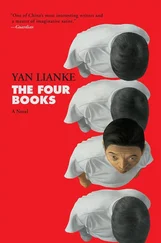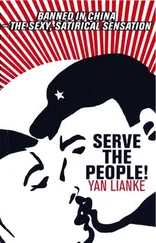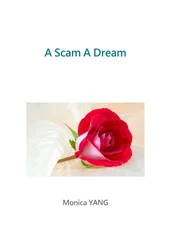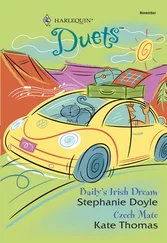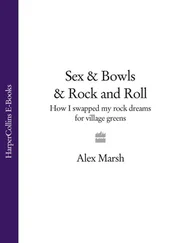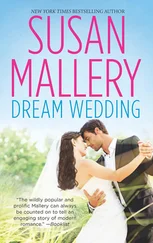By now, the trucks had attracted a crowd of curious villagers. They clustered around Uncle’s front gate, eager to get a look at the coffins. What they saw were a pair of his-and-her caskets. Both were made of gingko, an extremely rare and expensive timber.
With the spread of the fever, death had become commonplace on the plain. People died like falling leaves, like lamps being extinguished. Timber was in short supply, and the dead needed coffins as badly as the living needed houses. Paulownia trees were as scarce as silver, and cedar as precious as gold. But the coffins my father had delivered were not made from paulownia or cedar, but from the finest gingko. Uncle’s coffin was slightly larger, and it even had a name: the Golden Casket. It was made from three-inch-thick planks cut from a 1,000-year-old gingko tree. The grain was flawless, the wood soft to the touch but very solid, perfect for carving or painting on. With the exception of the base of the coffin, the side that would rest against the soil, every surface was engraved with extravagant scenes and famous landscapes. There were classical landscapes with mountains, rivers and heavenly clouds. Big-city scenes with broad avenues and narrow streets, streams of cars and pedestrians, bridges and interchanges that looped like intestines. There were tree-filled parks peopled with tiny figures flying kites or boating on lakes.
In the past, his-and-her coffins had been engraved with classical scenes such as images of piety from The Twenty-Four Filial Exemplars ; the legend of Meng Jiangnu, the loyal wife who cried down a section of the Great Wall while mourning her husband; and the legend of Liang and Zhu, the ‘Butterfly Lovers’, a Chinese Romeo and Juliet. But the engravings on Uncle and Lingling’s caskets were mostly big-city scenes depicting famous landmarks: Beijing’s Tiananmen Square, Shanghai’s Oriental Pearl television tower, Guangzhou’s high-rise hotels, and various bustling commercial districts, department stores, suspension bridges, fountains, parks and public squares. Needless to say, whoever had done the engravings must have been well travelled, in order to depict these cosmopolitan scenes so realistically. He had brought to life the wealth and splendour, the bustle and excitement of the modern Chinese metropolises of Beijing, Shanghai and Guangzhou. Every scene was in vivid colours, highlighted with red, gold and silver paint.
The villagers crowded around the coffins, gasping at their splendour.
‘Good heavens,’ exclaimed one woman. ‘Can you believe this thing? I’ll bet even emperors never got caskets this nice.’
Gingerly, she reached out to touch the engravings. ‘Come here, you’ve got to feel this. It’s smoother than a baby’s bottom!’
The villagers clustered around, touching the engravings and running their fingers over miniature high-rises, overpasses crowded with cars, street lamps lining public squares and people sitting beside lakes. Another woman, noticing that the cover of the casket was ajar, peeked inside and saw that the interior was also engraved. Gingerly, she raised the lid, revealing more engravings and an enlarged photograph of Ding Liang pasted at the head of the casket. The engravings presented an idyllic portrait of big-city life: a flat with refrigerator, washing machine, television set, home-entertainment centre, microphone, speakers and karaoke machine. A sumptuous banquet waited on a table: mouth-watering platters of chicken and duck, meat and fish, bottles of expensive wine, cups and wineglasses and festive red chopsticks. There were high-rises and office buildings, cinemas and theatres, all clearly the property of the Ding clan. Signs over the entrances to the buildings read ‘Ding Family Theatre’, ‘Ding Family Cinema’ and ‘Ding Family Towers’. Even the appliances and electronics were labelled with Ding Liang’s name.
But perhaps most important of all was the building engraved at the foot of Uncle’s coffin. A sign above the entrance to the building identified it as the ‘People’s Bank of China’. In this way, the accumulated wealth of an entire nation, the fruit of decades of Chinese economic development, would accompany Uncle into the afterlife. All the power and glory and prosperity of the world, stuffed into one casket.
The villagers turned to Lingling’s coffin. Although her ‘Silver Casket’ was a shade smaller than Uncle’s, it was made from the same material, the rare and expensive timber of the gingko tree, and the exterior was engraved with the same big-city scenes. Inside, at the head of the casket, was a photograph of Lingling smiling. Engravings on the inside of the casket showed silks and satins, clothing and jewellery, dressing tables, make-up boxes and other feminine items. There was also a handy assortment of kitchen items that no woman should be without: sideboards filled with bowls and plates, cups and glasses, modern cooking ranges with exhaust fans, aprons and bamboo steamers. There were potted plants and flowering bushes, grapevines and a pomegranate tree, a symbol of fertility. The engraving even included a miniature Lingling, hanging Uncle’s freshly washed shirts and trousers to dry under the pomegranate tree.
As the villagers were marvelling over Lingling and Uncle’s coffins, Grandpa emerged from Uncle’s house, beaming and looking years younger than he had just a few days before.
‘Professor Ding, these coffins are incredible,’ said one villager. ‘Liang and Lingling are very lucky.’
‘I don’t know about lucky,’ Grandpa said, standing beside the coffins. ‘But at least they will be buried with respect.’
‘What kind of coffins are these?’ asked another.
‘The old-timers used to call them “gold and silver caskets”, but these are more modern versions. You probably noticed all the city scenes.’
It was nearly time to place the bodies in the caskets. With the exception of Jia Genzhu and Ding Yuejin, everyone in the village seemed to be gathered outside Uncle’s house. Ding Yuejin’s own mother was there, as were Jia Genzhu’s wife and son. Crowds of people, some from neighbouring villages, milled outside the house and overflowed into the streets. The atmosphere was lively, as if Ding Village were putting on a performance and everyone had come out to see it. There was a crowd of laughing, chattering, jostling people: men and women, elderly folk and children, locals and visitors. Some of the kids were perched in trees or on the tops of brick walls, as if they were waiting for the show to begin.
The sun had risen, and was nearly overhead. Bright streaks of sunshine animated the crowd, turning a mournful event into a celebration. Turning a funeral into a public performance. My father was still at our house, talking to the men who had delivered the caskets from the city. My mother was at Uncle’s house, serving tea and passing out cigarettes to out-of-town guests who had come for the funeral. My little sister was running around in the crowd, squeezing through a forest of adult legs and generally getting underfoot.
At last, my father set out for Uncle’s house, trailed by a crowd of locals and visitors from the city and surrounding villages. When the mob outside Uncle’s gate saw him approaching, someone shouted: ‘Are you going to put the bodies in the coffins?’
‘Yes,’ my father answered. ‘It’s time.’
The time had come to dress the bodies and place them in their coffins with the items they would be buried with: brand-name liquor and cigarettes for Uncle, and a change of clothes and costume jewellery — that looked just like the real thing — for Lingling. As the villagers surged into the house, eager to help carry the bodies and funeral items, my father noticed that among them were a few of the gravediggers, bricklayers and others who were supposed to be helping with Jia Genbao and Ding Xiaoyue’s funerals.
Читать дальше


